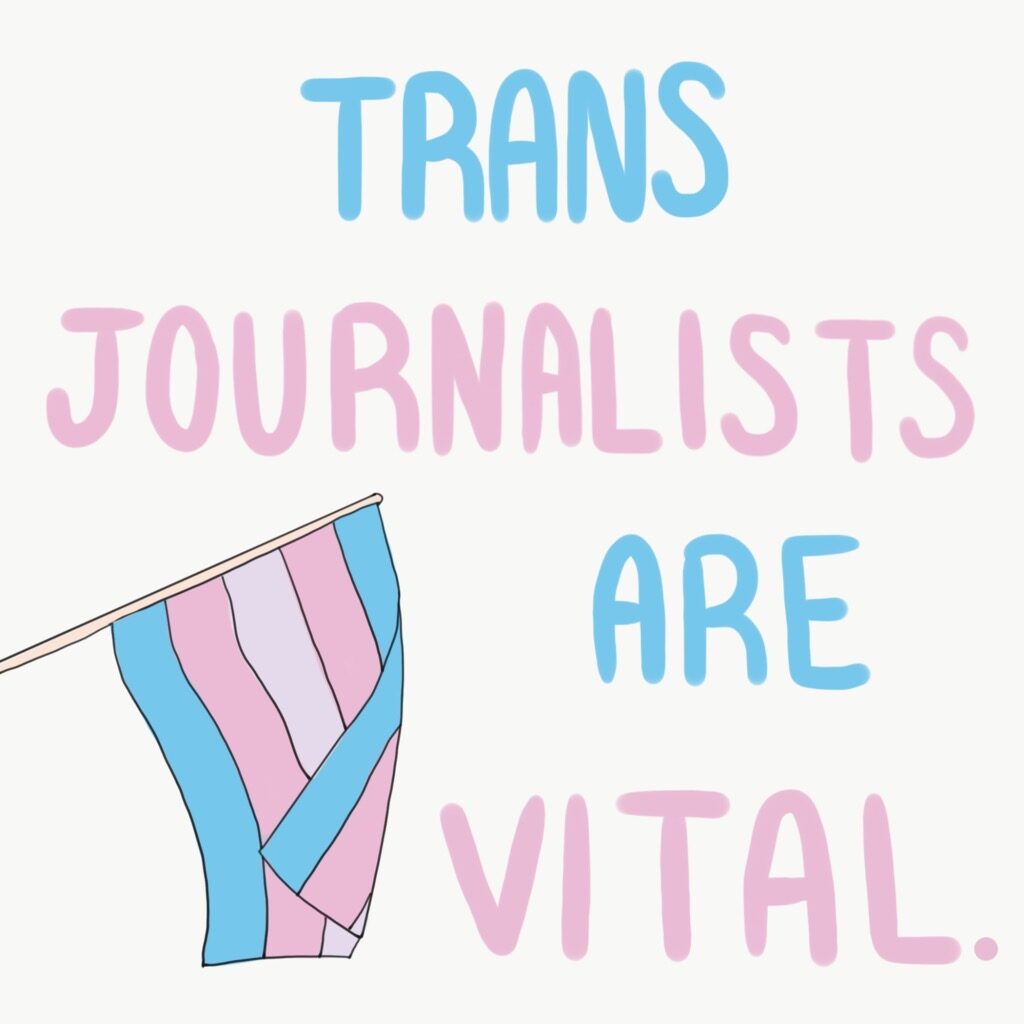SARAH HUGHSTON
Social Media Manager

When J.K. Rowling compared gender-affirming medical care to gay conversion therapy on Twitter, I was unfortunately not surprised.
Rowling has been rejected by many Harry Potter fans for her many TERF (Trans Exclusionary Radical Feminist) tweets.
A few days after those tweets, I saw an article for Them by Oliver-Ash Kleine announcing the Trans Journalists Association.
In the Black Lives Matter movement, there is a cry for justice.
Too often, however, Black trans women, as well as other Black trans and gender non-conforming people, are left out of that conversation.
Ahmaud Arbery, George Floyd and Breonna Taylor are (rightfully) discussed throughout the media right now.
How many people are talking about Nina Pop, Tony McDade, Dominique “Rem’mie” Fells, Riah Milton, Brayla Stone, Merci Mack, Shaki Peters and Bree Black? (Side note: all of these people were 37 years old or under. If you don’t recognize their names, I suggest you learn them. Remember their stories).
According to a Human Rights Campaign article, “2020 has already seen at least 21 transgender or gender non-conforming people fatally shot or killed by other violent means. We say at least because too often, these stories go unreported — or misreported.”
Trans people are frequently misgendered in the media.
This is why the Trans Journalists Association is such an important step.
The association started after Kleine sought a community that hadn’t been created yet, prompting them to start a Facebook group for trans journalists.
Now, Kleine explains in the article, “having a more formal place to network with so many other trans journalists gave many of us access to community in our industry we didn’t previously have. Networks like these are essential for underrepresented and marginalized groups…”
Creating a community of trans and gender non-conforming journalists is an important step in creating the representation they deserve.
Trans journalists should be reporting on trans issues, because they are able to understand those stories better. They should also be able to report on whatever they choose to, whether it is related to their identity or not.
The Trans Journalists Association’s website also includes a style guide and a “For Employers” section, which details trans-friendly workplace policies and a guide for supporting employees who come out as transgender.
Their style guide says that “most of the public’s primary source of information on trans topics is likely through the media (only about a quarter of people in the United States, for instance, have a close friend or family member who is out as trans), meaning media coverage is critical in shaping how the public talks and thinks about transgender people.”
Recently, the Netflix documentary, “Disclosure,” directed by Sam Feder, premiered.
The film showcases the stories of trans lives on screen, while interviewing trans people in the media. It is an important watch for anyone looking to understand trans representation.
The documentary’s website says, “since 80 percent of the population have never met a transgender person, all they know is rooted in media depictions, which are predominantly problematic and have rarely included participation by actual trans people. ‘Disclosure’ is aimed at that 80 percent.”
The journey of representation in the media for trans and gender non-conforming people has not been a smooth one. However, with films like “Disclosure” and the creation of the Trans Journalists Association, we are slowly moving in the right direction.
